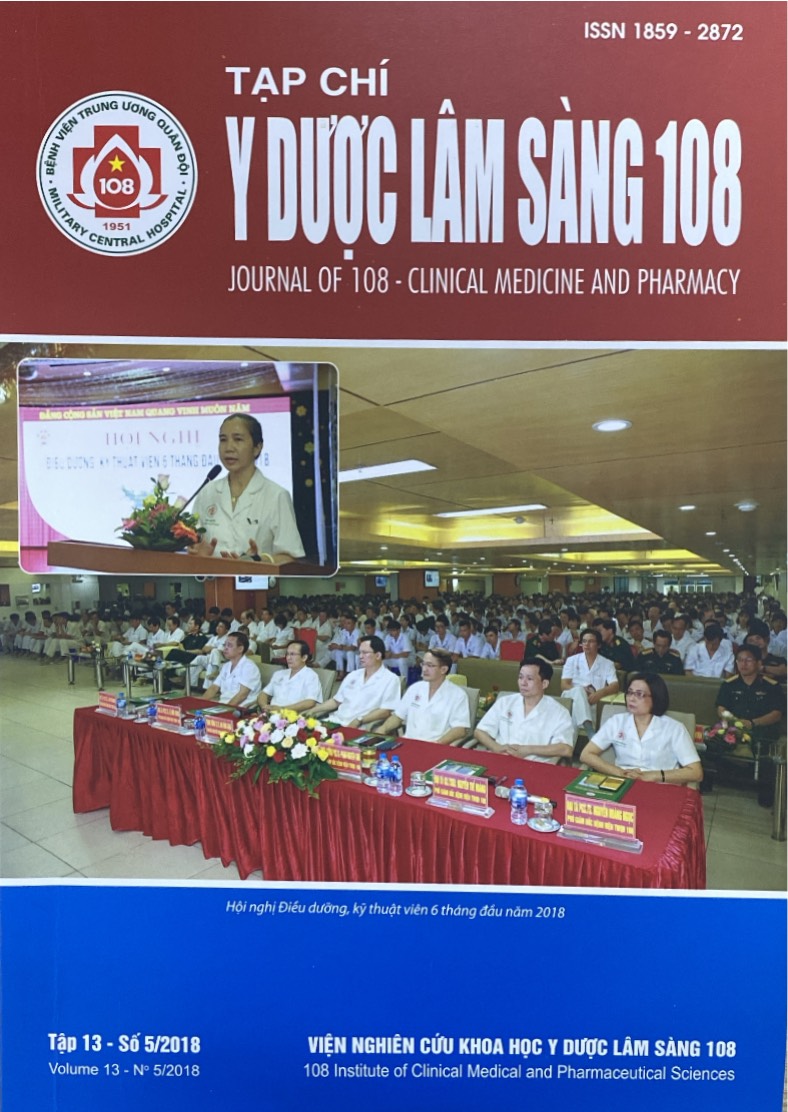Clinical and paraclinical features in septic shock patients cased by Gram negative bacteria hospitalized in 108 Military Central Hospital from 2016 to 2018
Main Article Content
Keywords
Abstract
Objective: To describe clinical and laboratory characteristics in septic shock patients due to Gram negative bacteria treated at 108 Military Central Hospital. Subject and method: 44 septic shock patients due to Gram negative bacteria treated at 108 Military Central Hospital. These patients met septic shock criteria according to Survival Sepsis Campaign (SSC) 2016 and their blood culture results were positive with Gram-negative bacteria. A cross-sectional study was conducted with the sample size of convenience. Patient information was documented by a standard questionnaire form. Result: Clinical manifestations were very complex, Fever accounted for 81.8%, mainly mild-grade fever 52.8%. Rigor 58.3%. The most common organ failure was kidney failure with 74.4%, followed by liver failure with 68.2% and respiratory failure with 65.9%. The mortality rate was high as 65.9%, the most common primary infection site was GI tract with 45.6%, followed by respiratory tract (25%), urinary tract (20.5%). Leukocytosis was 61.4%, mainly mild elevated. Hundred percent of patients had high level of PCT with 91% patients had PCT > 10ng/ml. E. coli is the major cause with 59.1%, followed by K. pneumoniae with 15.9%.
Article Details
References
2. Đinh Hà Giang (2016) Nghiên cứu đặc điểm lâm sàng và tình trạng suy đa tạng ở bệnh nhân sốc nhiễm khuẩn. Khóa luận tốt nghiệp bác sỹ đa khoa, Trường Đại học Y Hà Nội.
3. Nguyễn Mạnh Hùng (2004) Nghiên cứu đặc điểm lâm sàng, cận lâm sàng và điều trị rối loạn đông máu ở bệnh nhân sốc nhiễm khuẩn. Luận văn Thạc sỹ y học, Trường Đại học Y Hà Nội.
4. Hoàng Văn Quang (2011) Nghiên cứu đặc điểm lâm sàng và kết quả điều trị suy đa tạng ở bệnh nhân sốc nhiễm khuẩn. Luận án Tiến sỹ y học, Trường Đại học Y Hà Nội.
5. Vũ Hải Yến (2012) Nghiên cứu đặc điểm lâm sàng-cận lâm sàng và kết quả của liệu pháp điều trị sớm theo mục tiêu ở bệnh nhân sốc nhiễm khuẩn. Luận văn Thạc sỹ y học, Trường Đại học Y Hà Nội.
6. John S, Griesbach D, Baumgartel M et al (2011) Effect of continuous haemofiltration vs intermittent haemodialysis on systemic haemodynamics and splanchnic regional perfusion in septic shock patients: A prospectie, randomized clinical trial. Nephrol Dial Transplant 16: 320-327.
7. Andrew Rhodes (2017) Surviving sepsis campaign: International guidelines for management of sepsis and septic shock: 2016. SCCM and ESICM.
8. Marshall B, John C, Cook et al (1995) Multiple organ dysfunction score: A reliable descriptor of a complex clinical outcome. Crit Care Med 23(10): 1638-1652.
9. Ferriere F et al (2004) Diagnostic and prognostic value of procalcitonin in patients with septic shock. Crit Care Med 32(5): 1166-1169.
 ISSN: 1859 - 2872
ISSN: 1859 - 2872
